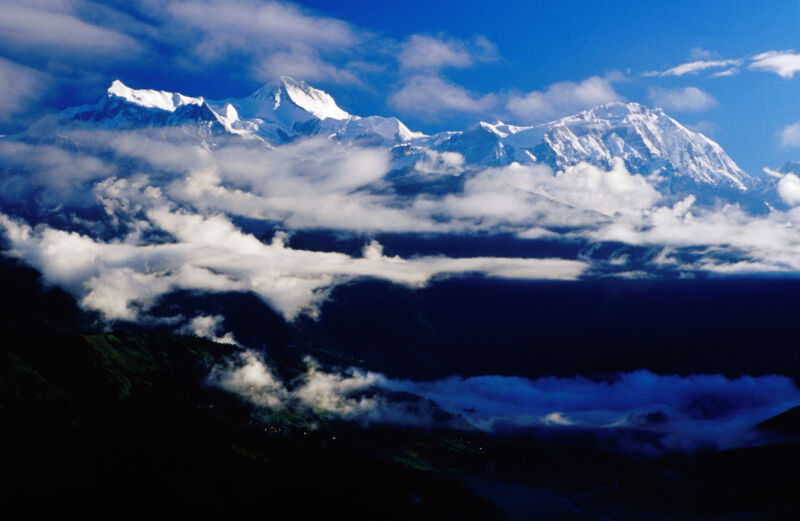
Enlarge / Annapurna IV, at left here, might have once been half a kilometer taller. (credit: Richard I'Anson)
The Earth's mountains are engaged in a constant balancing act. Tectonic forces—a combination of volcanism and plate collisions—push them skyward. But erosion pulls them down. The height of the tallest peaks is set by which of these forces dominate.
When it comes to erosion, ice can be a dominant factor. Glaciers scrape away rock, while freeze/thaw cycles crack it. But a new paper suggests that ice has a limited effect on the very tallest peaks. At those altitudes, the freeze/thaw cycle shuts down because things remain cold year-round. And most peaks are steep enough that glaciers never have the chance to form. (They're mostly a kilometer or more below the peaks, down in the valleys).
Instead, the new paper argues that the tallest mountains don't so much erode as collapse, producing utterly massive landslides that can be catastrophic many miles downslope. To make this case, the paper presents evidence from a landslide involving 20 cubic kilometers of material in the Annapurna region of Nepal.
No comments:
Post a Comment